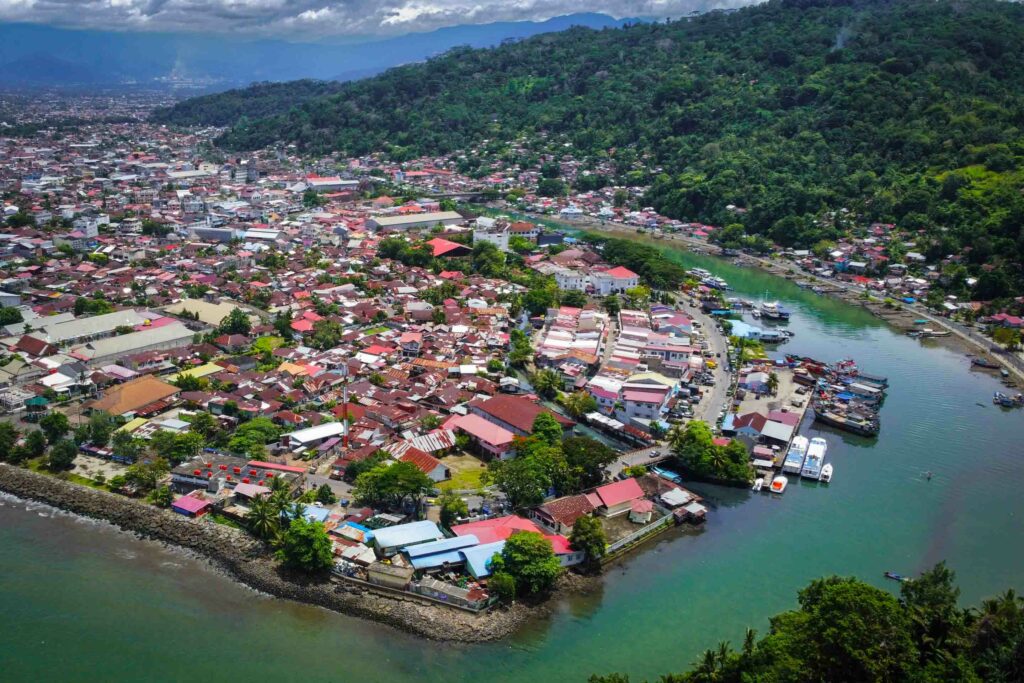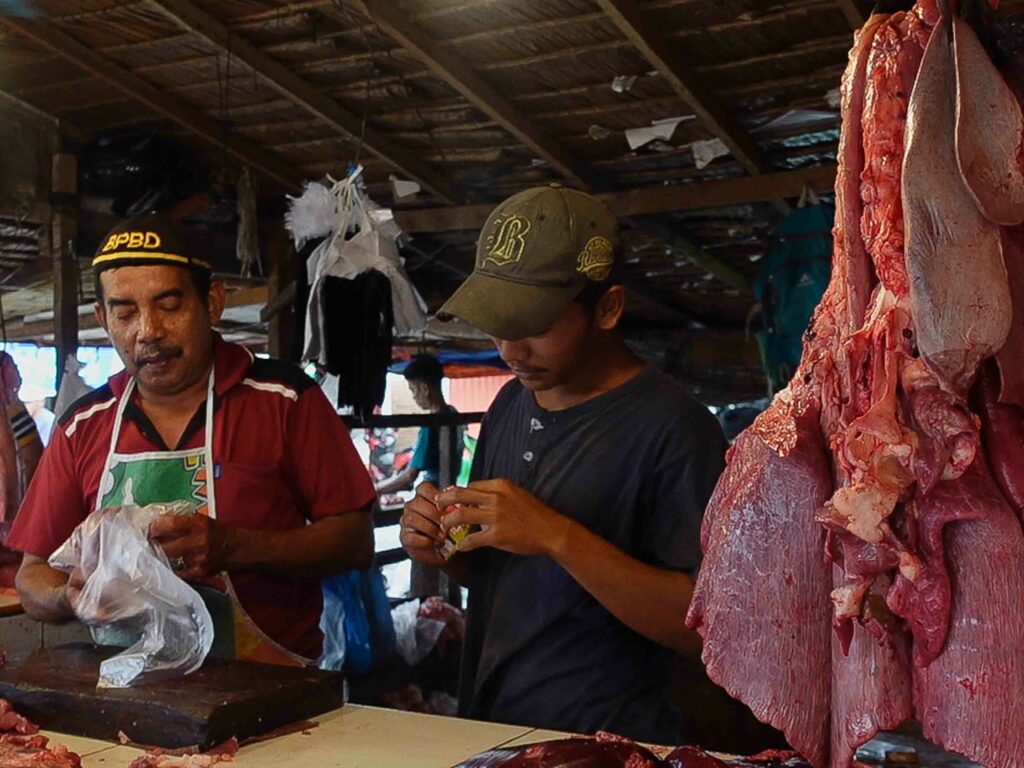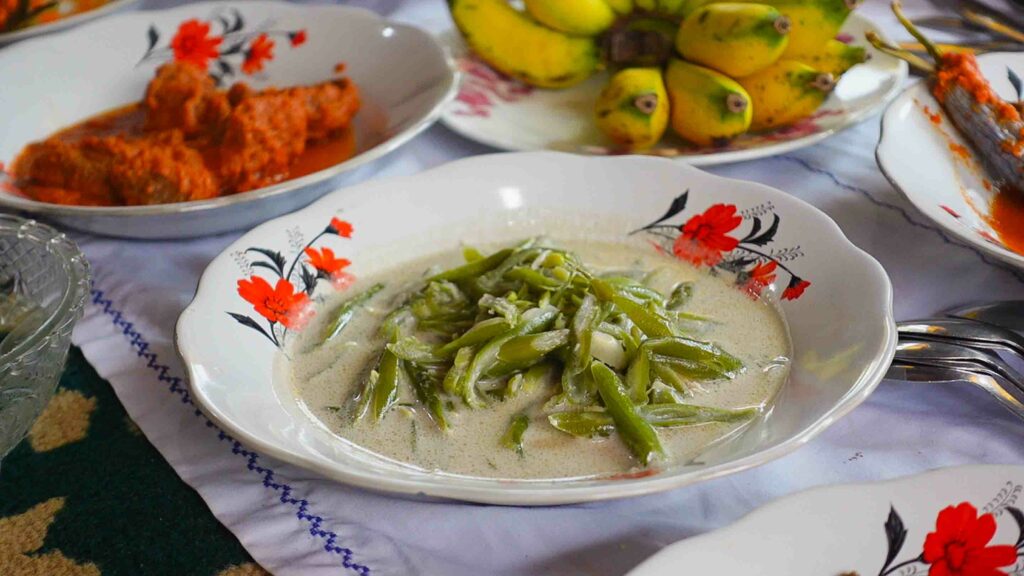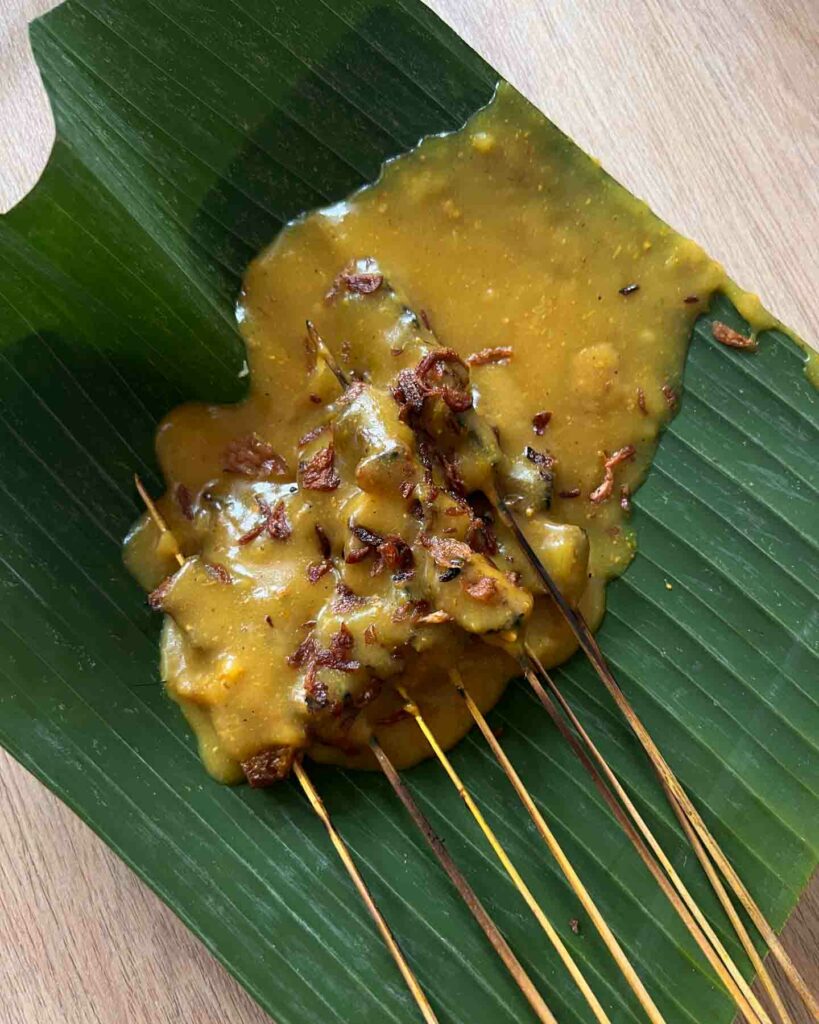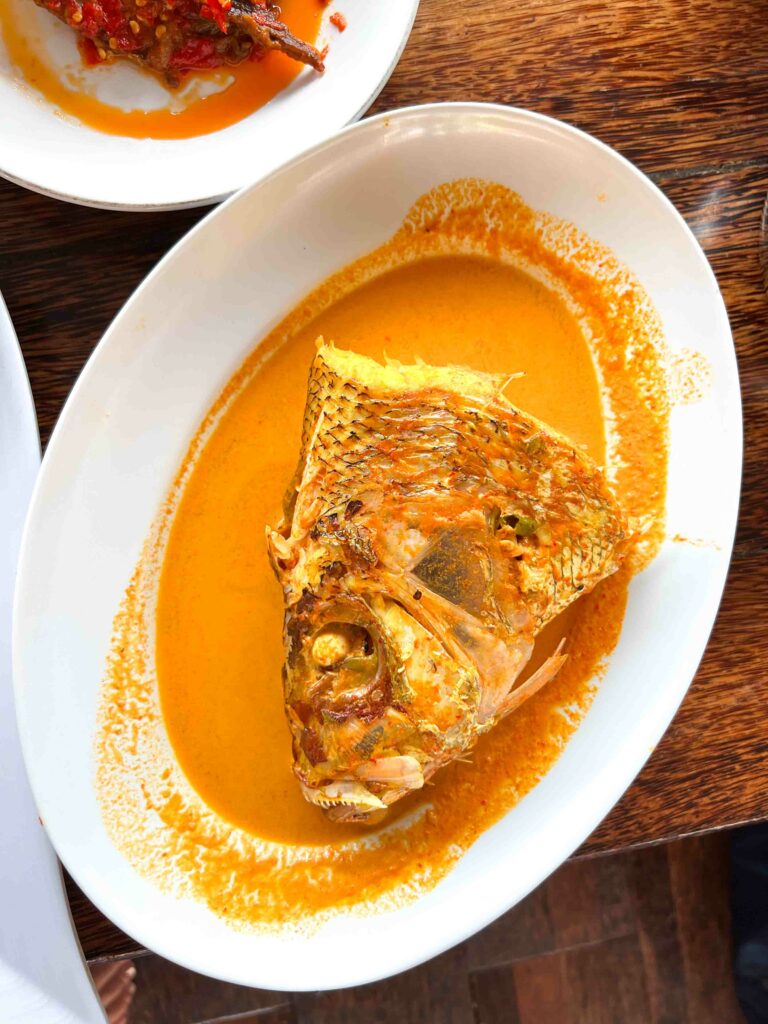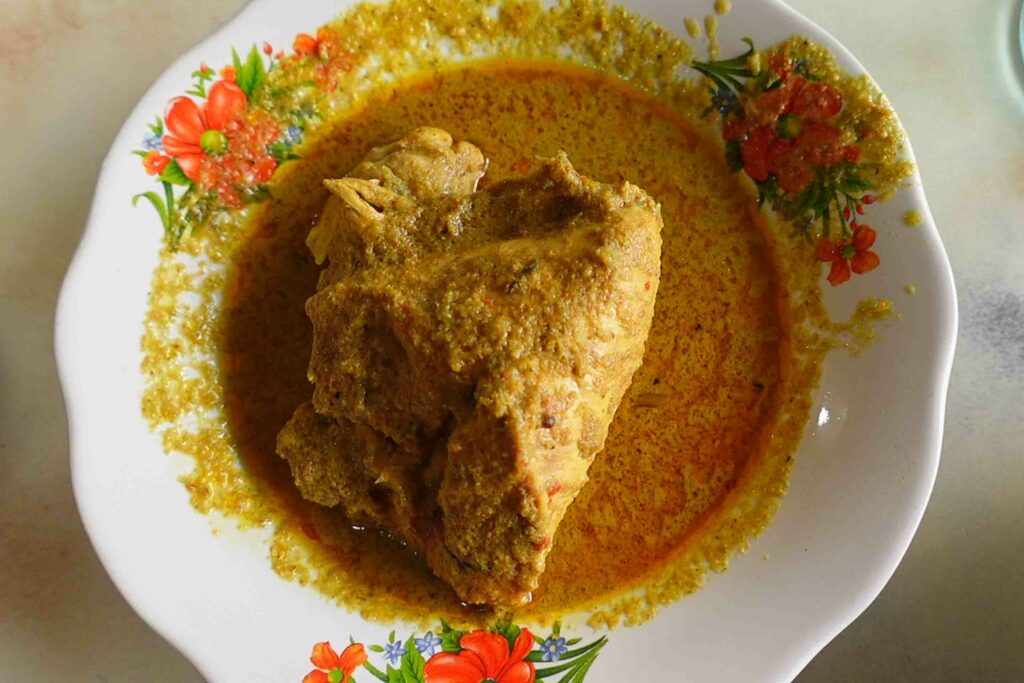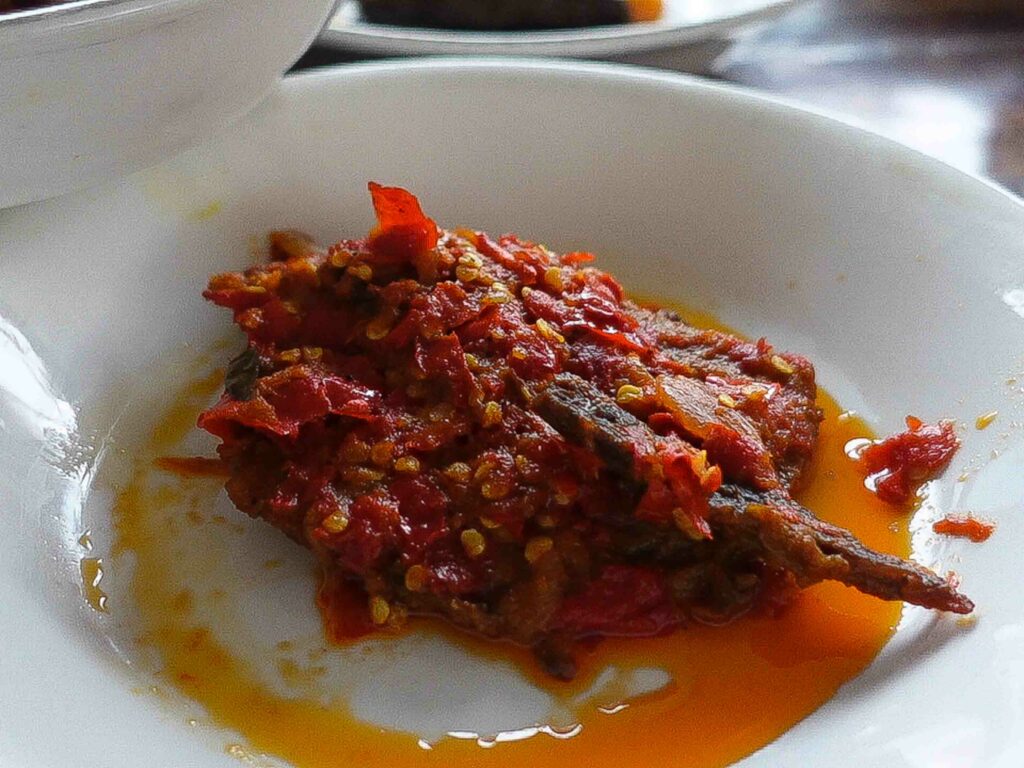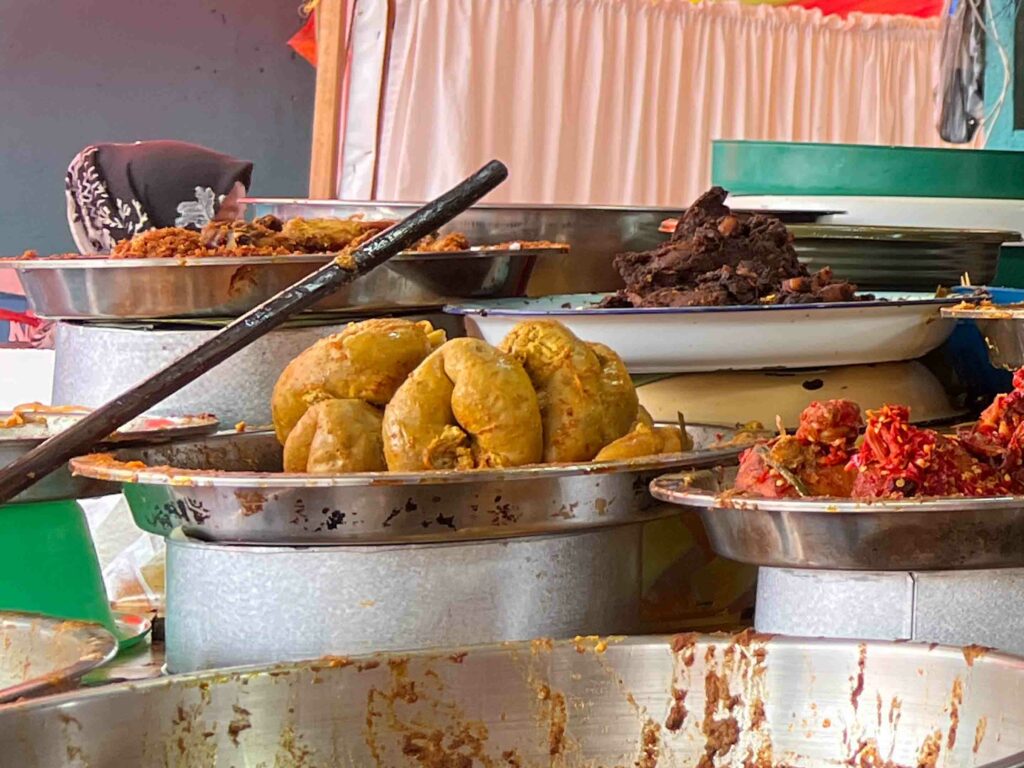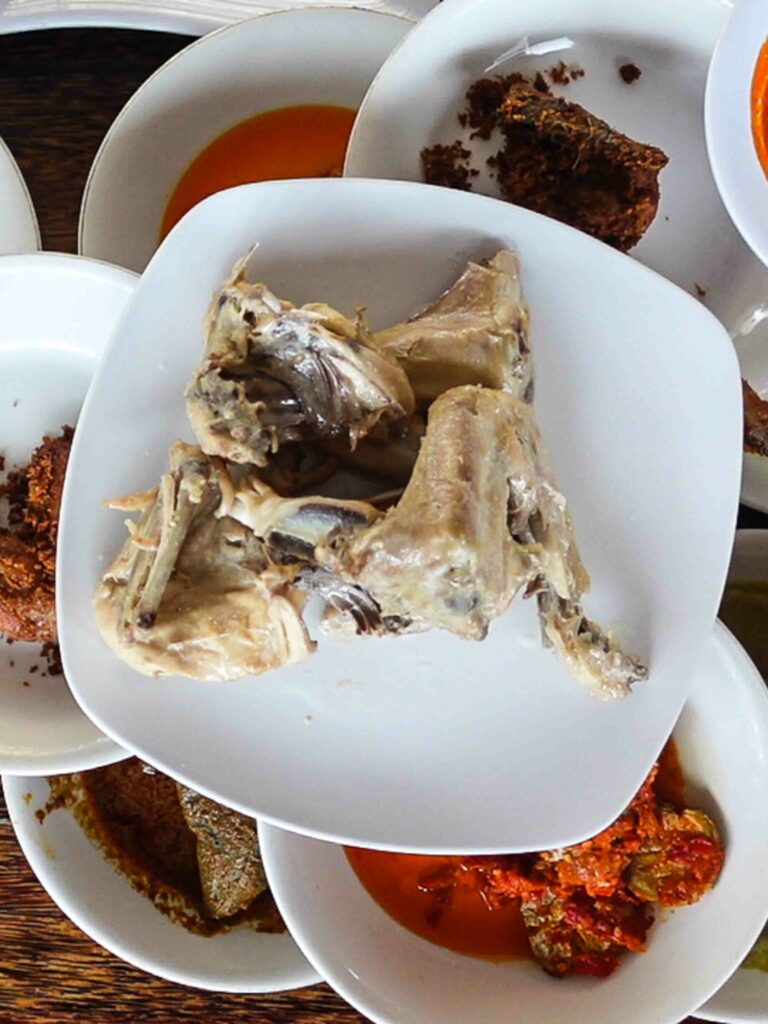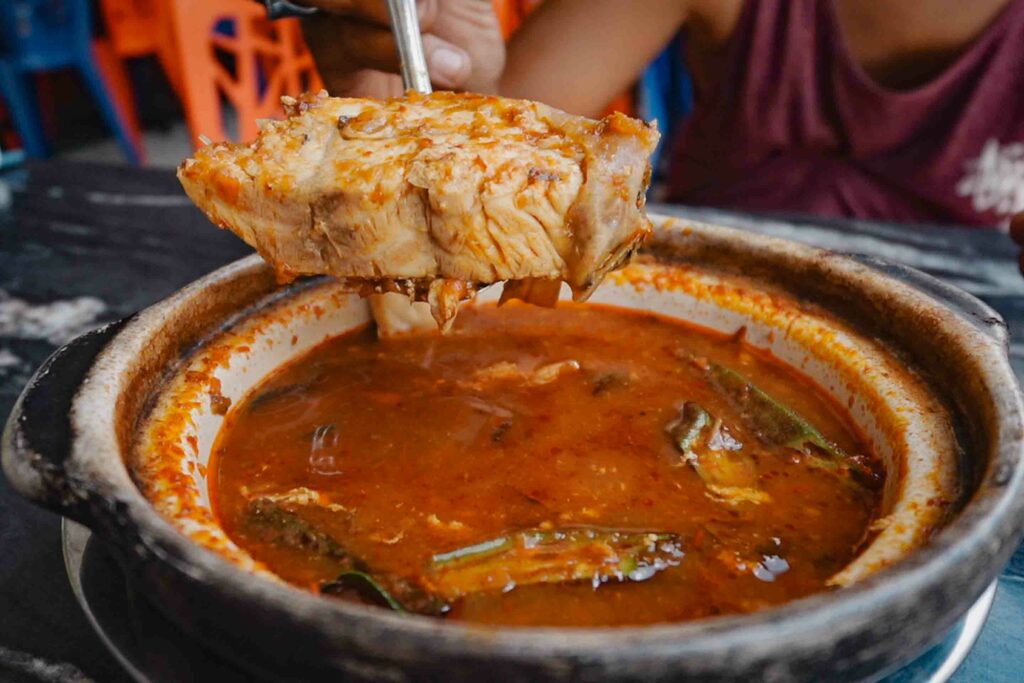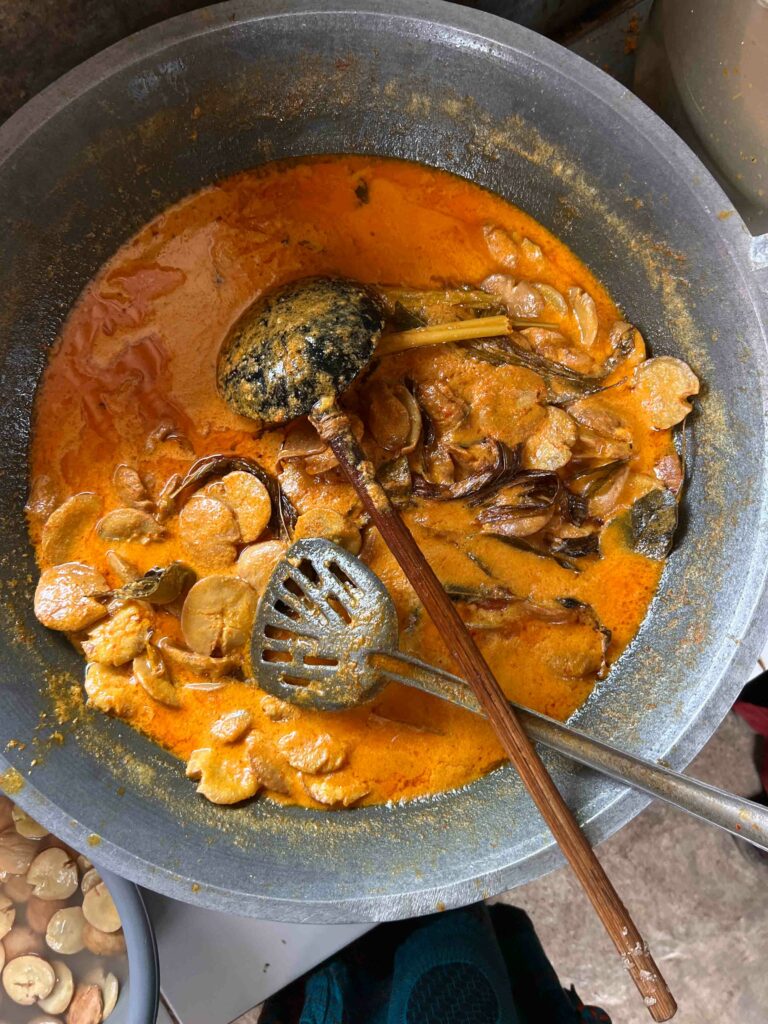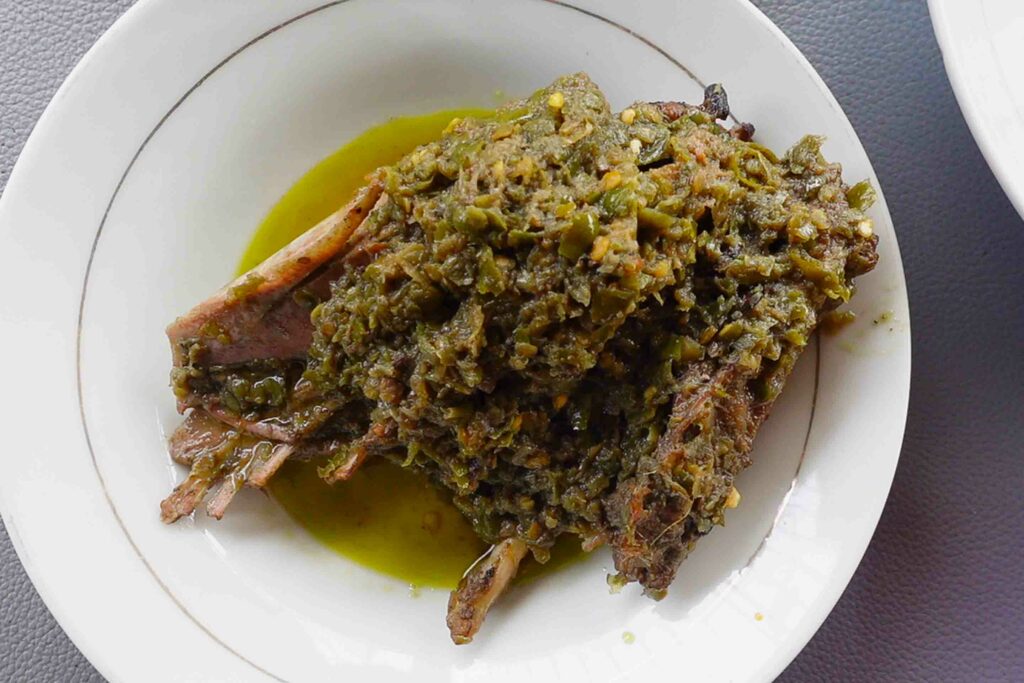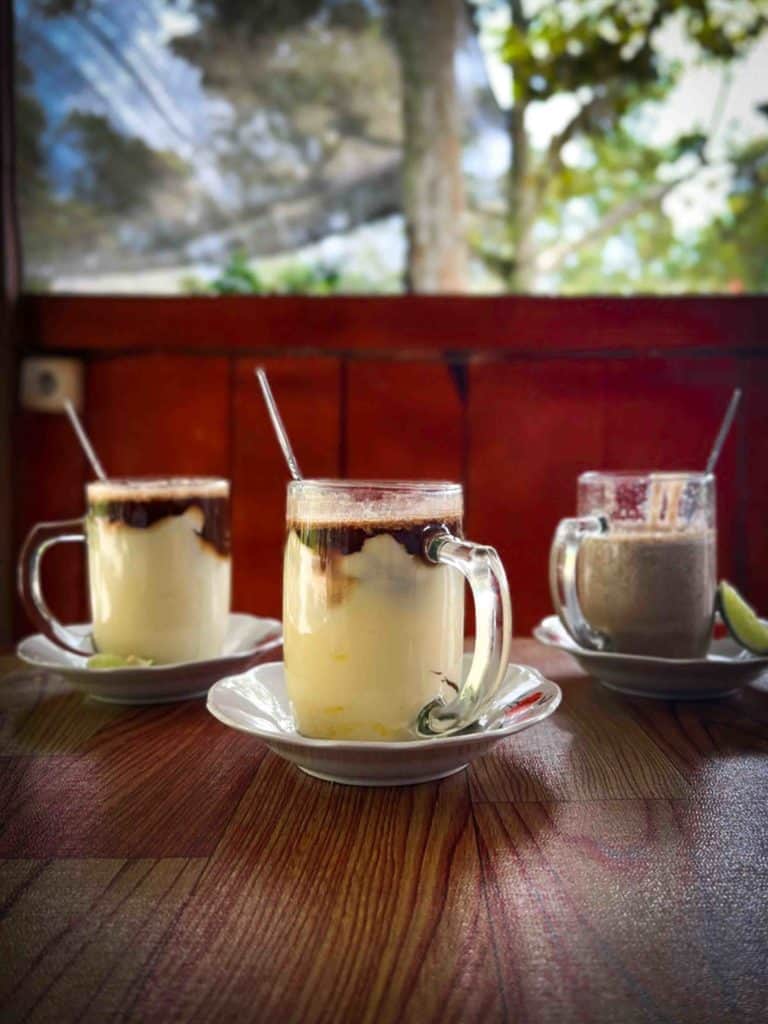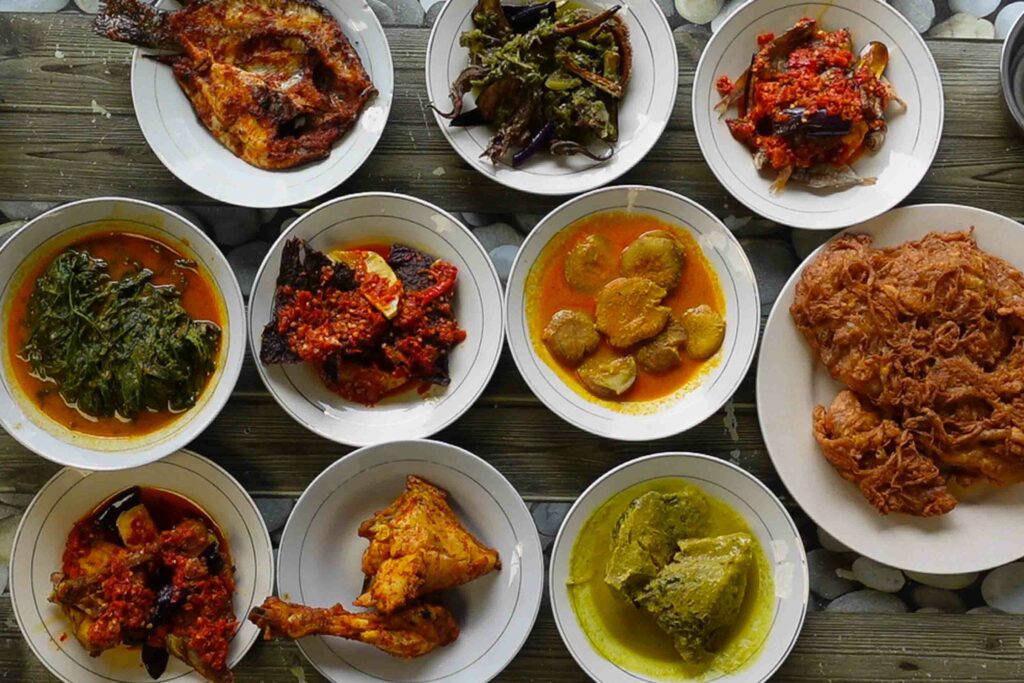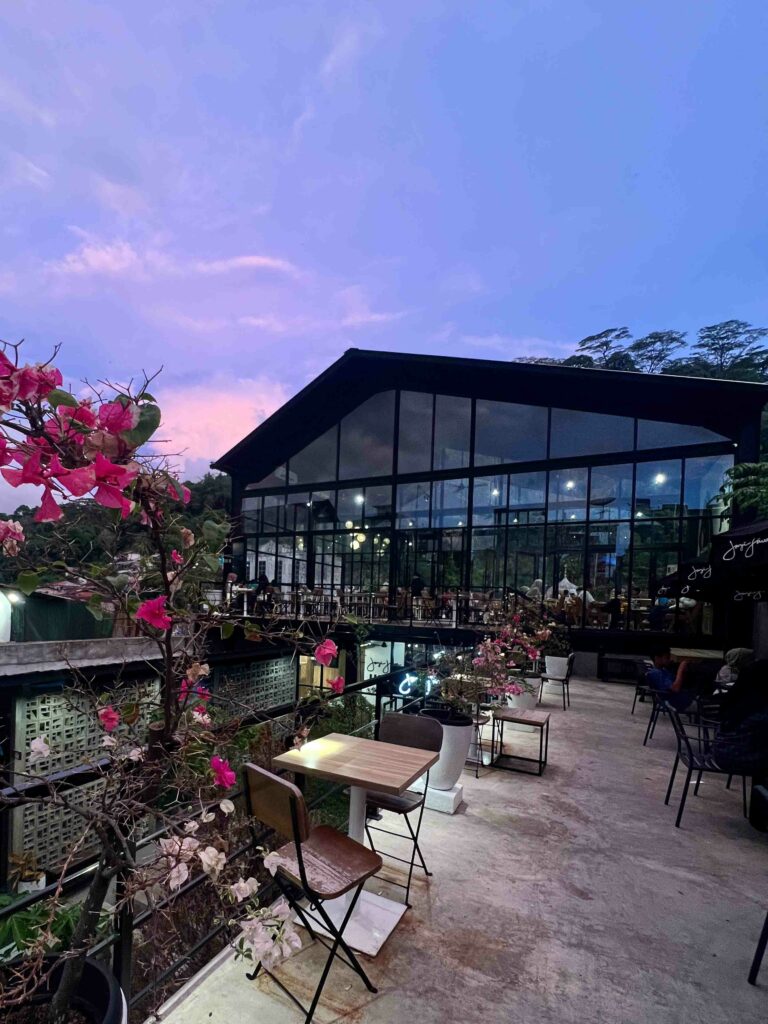The most famous culinary city in Indonesia, you can’t miss Padang food.
I was born and raised in Padang, the capital of West Sumatra. The Minangkabau people, our ethnic group, is one of the largest tribes in the country and known to have the best food in Indonesia.
It is so popular amongst Indonesians you can find Minang cuisine all over the country.
This is because so many moved around the country, but also to other countries such as Malaysia and as far as Canada.
Wherever we go, we bring our food with us. However, we know that wherever we go we must change dishes slightly to cater to our new home.
So for example, food may be a bit sweeter in Java and definitely less spicy in Canada!
This is why if you want the true taste of Padang food, you must come to our city in West Sumatra.
Traditional Minangkabau Cuisine Influences
Padang cuisine is well-loved for its rich use of coconut milk and the bold flavors of spicy chili.
In Minangkabau food, you’ll find it’s all about three essentials: gulai, which is a savory curry, lado, adding that spicy chili kick and bareh, the staple rice that brings it all together.
Padang is a port city. Historically, it’s influenced by the region’s trade interactions.
This created a blend of Indigenous cooking techniques with flavors brought in by Indian, Middle Eastern and later, European traders.
Geographically, the fertile volcanic highlands of Sumatra provide a bounty of ingredients. Rice, chili, coconut and fresh greens define Padang cuisine’s vibrant flavors.
Immigration plays a crucial role too. The Minangkabau people have a matrilineal society, which encourages men to seek fortunes elsewhere in a tradition known as merantau.
As men traveled and settled across Indonesia and beyond, they opened eateries known as Rumah Makan Padang to serve the comforting tastes of home.
Most people living in Padang are Muslim, although you’ll also find Christians (Protestants and Catholics) but it means it’s difficult to find pork.
If you crave pork dishes look for Chinese restaurants, although as there is not high local demand it will be difficult to find.
However, water buffalo is common. It is a great city in Indonesia to eat beef.
Indonesian Food
Eating With Your Hands in Indonesia
In Padang homes digging in with your right hand is the norm.
In restaurants you’ll often see kobokan on the table, which is a bowl of water with a refreshing slice of lime for washing your hands before and after enjoying your meal.
Don’t worry if eating with your hands isn’t your thing. It’s totally fine to request a spoon and fork. Many locals will also use utensils in restaurants if they don’t want to get their hand dirty.
Servers usually hand them to foreigners as locals know tourists use cutlery.
30 Padang Food You Must Try
Here’s a list of 30 Padang foods that you can find in the city and many throughout West Sumatra. You will notice every second item on this list is gulai or what you know as curry.
This is because of the cultural influences from India and other countries during trading times in this port city,
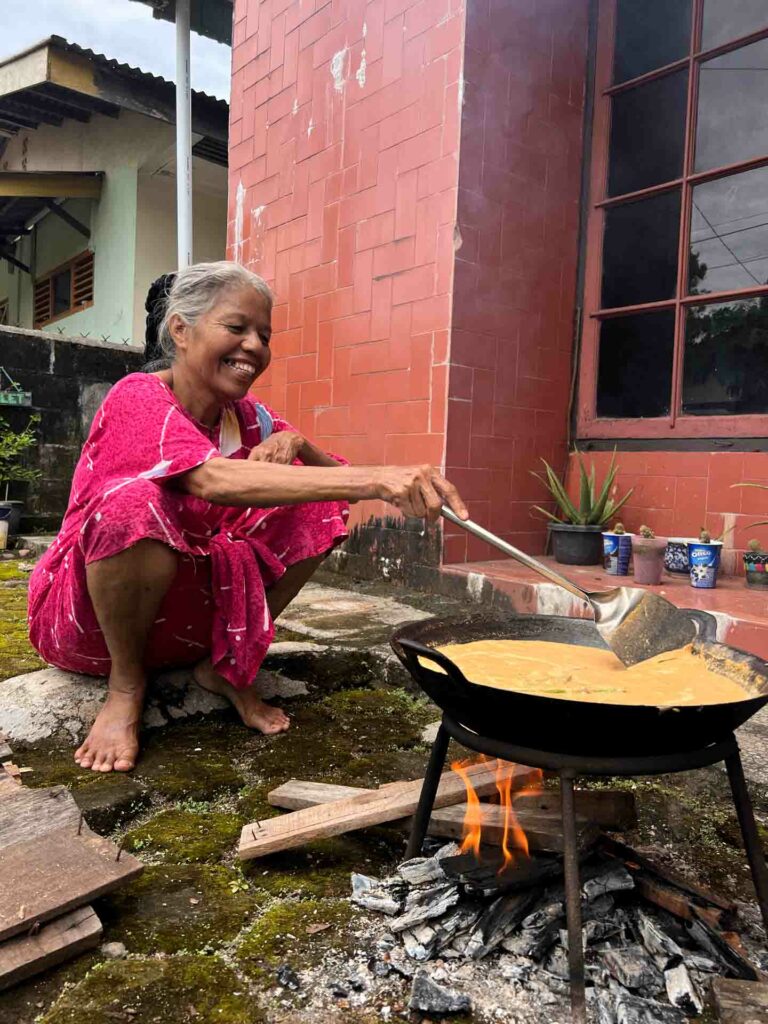
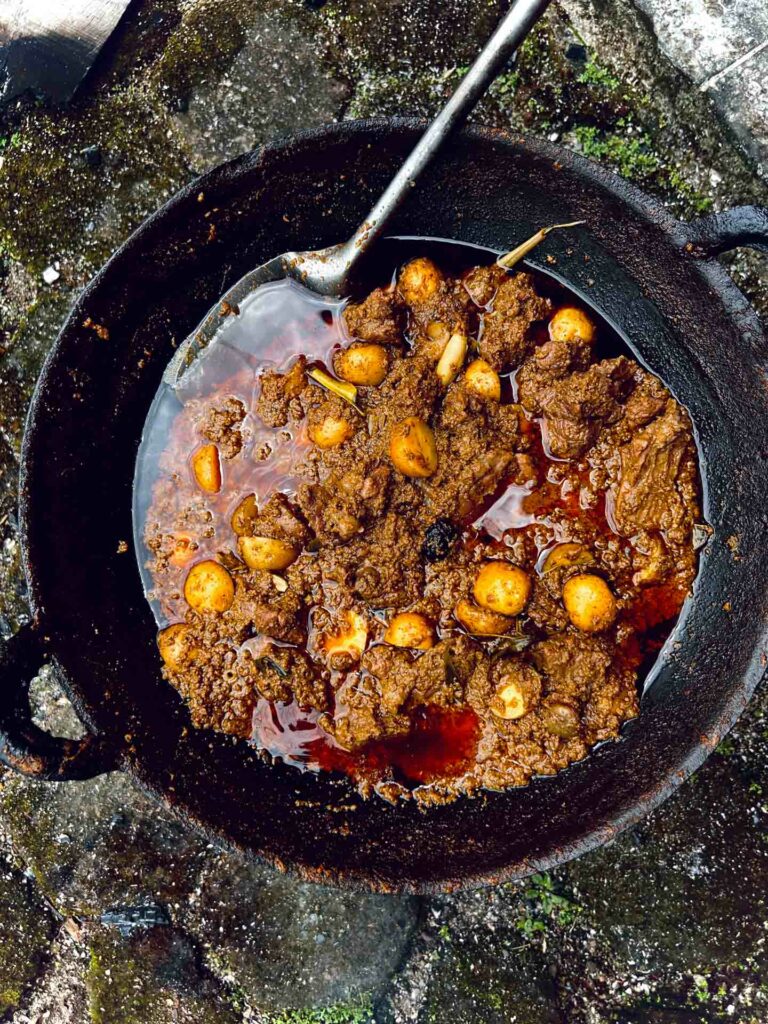
Rendang
Rendang is a rich, slow-cooked meat dish, often using beef but sometimes chicken.
Meat is simmered with coconut milk and a mixture of lemongrass, galangal, garlic, turmeric, ginger and chilies until it becomes tender and flavorful.
This process can take up to 12 hours, allowing the flavors to deeply penetrate the meat. The most traditional are cooked over a fire.
Rendang is actually more of a dry curry and it’s known for its complex taste and tender texture.
Originating from the Minangkabau, it has gained worldwide fame and often represents Indonesian cuisine internationally.
In fact it’s one of five Indonesia national foods.
You can find rendang all over Indonesia, but it’s often less spicy and not cooked over fire.
Gulai Hati Kalang
Gulai hati kalang is a hearty stew that highlights chicken liver and gizzards in a flavorful coconut milk base.
The spices and herbs blend harmoniously, creating a dish that is both bold and comforting.
It’s a traditional way to use all parts of the chicken. This gulai is a staple in Padang eateries and is beloved for its rich, deep flavors.
Lontong Gulai Buncis
A vegetarian curry made with chickpea beans that look similar to green beans.
It is served with lontong, which are boiled rice cakes.
A common side dish, buncis reflects the Dutch influence as they brought this ingredient, which is known there as boontjes.
Lontong Gulai Paku
Gulai paku features tender fiddlehead ferns in a spicy, turmeric-laced coconut milk broth.
It’s a vegetarian delight that showcases the Minangkabau’s use of local greens. The ferns are foraged from the wild, which makes this dish a seasonal specialty.
It is served with rice cakes are woven in a palm leaf pouch before being boiled, giving them a unique texture and appearance.
The coconut milk adds a creamy texture, complementing the unique, slightly nutty flavor of the ferns.
This dish is a testament to the Minangkabau’s connection with nature and their culinary creativity.
Easy Fiddleheads Recipes
Pergedel Kentang
Pergedel kentang is a popular Indonesian snack made from mashed potatoes. It is often mixed with spices and sometimes ground meat, then deep-fried to golden perfection.
These potato fritters are crispy on the outside, soft on the inside and are a comforting treat.
They are commonly served as a side dish or as an accompaniment to soups and stews.
Sate Padang
There are over 250 kinds of sate in Indonesia with many different ingredients. The Malang sate is often made with goat or rabbit while many other cities feature chicken.
Sate Padang stands out with its thick, yellow sauce drizzled over skewered and grilled meat. It is often served with lontong or boiled rice cakes to make it a bit hearty.
The sauce, a blend of rice flour, turmeric and other spices, gives the dish its signature look and taste.
Beef is the common choice of meat, marinated and then grilled to perfection and topped with crispy shallots.
You should also look out for sate Pariaman, which has a distinct red color sauce and equally delicious.
Kalio Ayam
Kalio ayam is similar to rendang but with a wetter sauce and a lighter color.
Chicken pieces are simmered in coconut milk with a variety of spices until the sauce thickens, but not as long as rendang.
It’s a milder curry option that still packs a flavorful punch, popular for its versatility and rich taste.
Gulai Kepala Ikan
Gulai kepala ikan is a delicious fish head curry that’s a true delicacy.
The head of a large fish, such as snapper, is stewed in a rich, spicy coconut milk broth infused with a blend of traditional Indonesian spices.
This dish is highly valued for its flavorful, gelatinous textures and is often seen as a communal meal, bringing family and friends together.
Make sure to spend some time south of Padang in Bungus Bay as the small local restaurants have great seafood.
Gulai Itik
Gulai itik is a rich and aromatic duck curry.
The duck is slowly simmered in a coconut milk-based sauce infused with a blend of traditional spices, resulting in tender, flavorful meat.
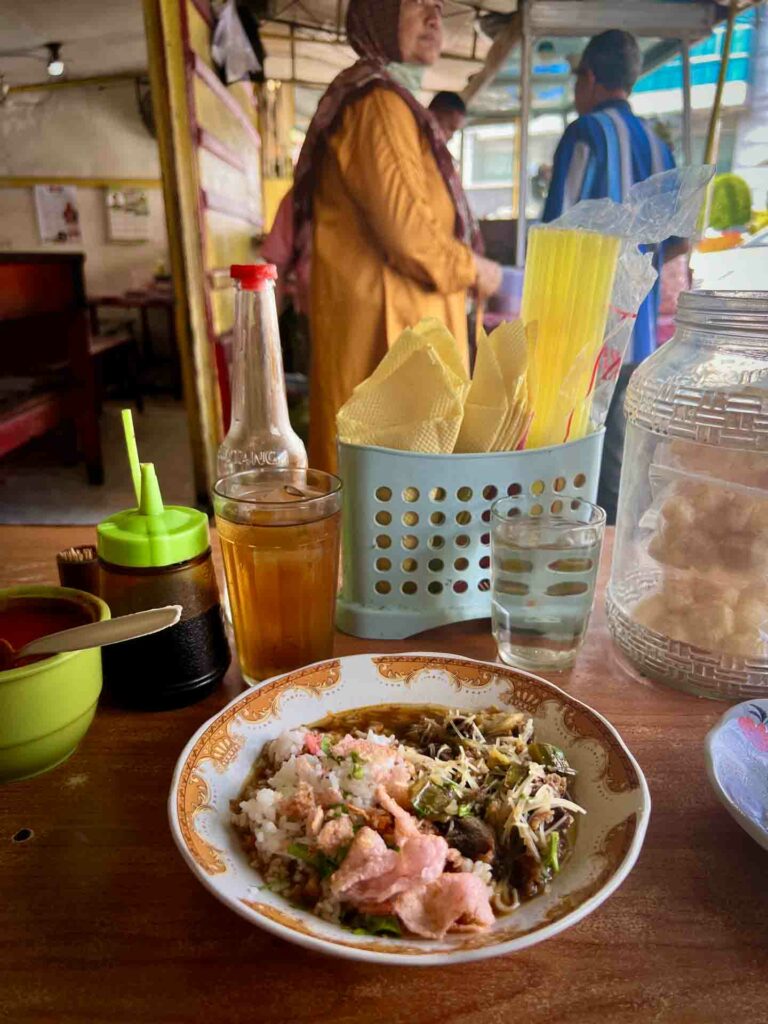
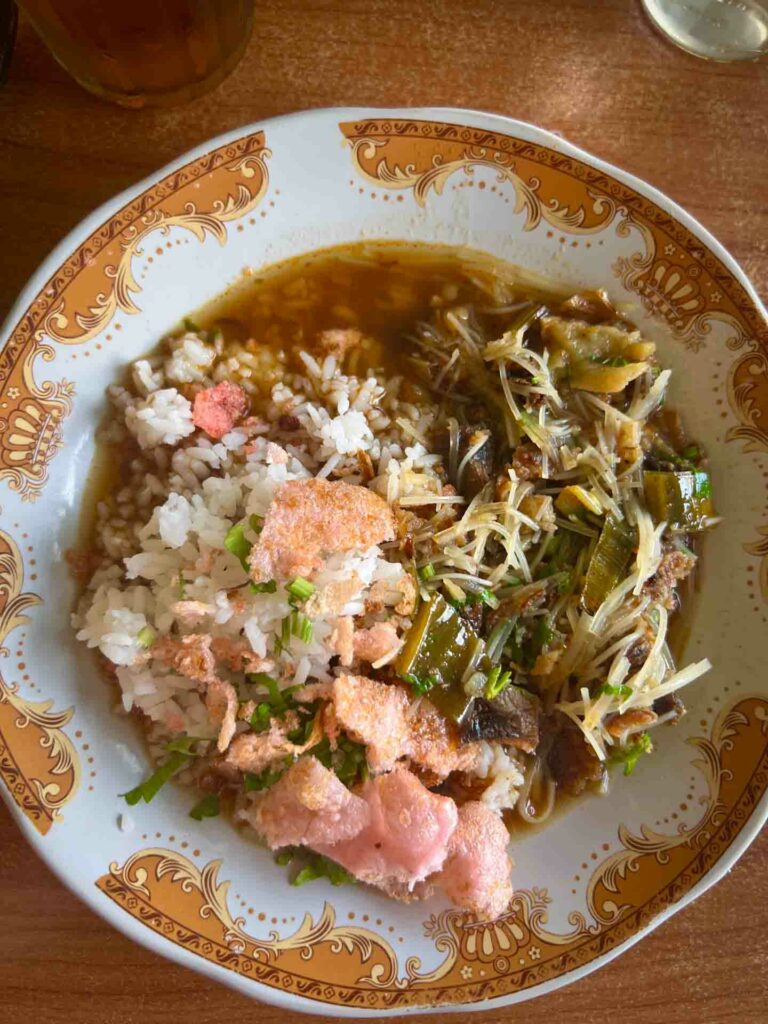
Soto Padang
Soto is a light yet satisfying soup that’s enjoyed across Indonesia. Each region does it differently. It’s also a popular Surabaya food that uses chicken.
The Padang version is known for its bold spice mix and comforting warmth.
Soto Padang is a clear, aromatic broth brimming with dried beef slices and rice noodles. It is garnished with fried potato slices and red crackers.
A bowl of rice is served on the side. Resist dumping the rice into the soup as it will become mushy. Instead, spoon the broth and soup over the rice.
Gulai Gajeboh
Gulai gajeboh is a fatty curry dish using cow skin, slow-cooked in a spiced coconut milk gravy until it becomes deliciously soft and gelatinous.
This dish is another example of no-waste approach to food in Padang.
Gulai Ayam
Gulai ayam is a staple chicken curry of the region, rich in coconut milk and vibrant with turmeric, galangal and other spices.
The chicken is slowly simmered until tender, soaking up the complex flavors of the sauce.
This dish is a beloved everyday meal, showcasing the Minangkabau’s mastery of curry-making.
Indonesian Food
Sambalado Tanak
Sambalado tanak is another sambal, made by simmering green chilies, shallots, garlic and other spices until thickened.
It’s a common household condiment in Padang kitchens, known for adding bold, spicy flavor.
Dendeng Balado
Dendeng balado is a spicy, crispy beef dish. Thin slices of beef are marinated, then dried and fried until they achieve a chewy, jerky-like texture.
The beef is then coated in a sambal balado, a hot chili mixture, for an extra kick.
Dendeng is served dry, eaten like a chip or wet in a sauce. I prefer the wet dendeng as the sauce has tamarind and chili.
Lado Tanak
Lado tanak is a type of Indonesian sambal made with red chilies, typically cooked with tomatoes and shallots, creating a rich, spicy and slightly sweet condiment.
It’s a versatile sambal that complements many Padang dishes, adding depth and heat to each bite.
Gulai Tambunsu
Gulai tambunsu is a unique, comforting dish featuring cow’s intestines stuffed with a spiced coconut mixture.
The intestines are cooked in a rich, turmeric-infused coconut milk curry. This dish is a testament to the Minangkabau’s nose-to-tail eating philosophy, ensuring no part of the animal is wasted.
It’s a dish that’s both sustainable and delicious, with a creamy texture and a depth of flavor.
Gulai Pucuak Ubi
Gulai pucuak ubi is a nutritious and flavorful curry made with cassava leaves.
These leaves are simmered in a spiced coconut milk broth, becoming tender and infused with flavor.
Ayam Pop
Ayam pop is a mild-flavored, comforting dish consisting of chicken that’s been boiled in coconut water and then fried until just golden.
The meat remains tender and moist, often served with a tangy sambal sauce on the side.
It’s considered a cousin to the Yogyakarta food ayam kalasan, which is marinated in a blend of spices and coconut water.
This dish showcases the Minangkabau’s Dutch colonial influence. Its cooking technique resembling poaching. It’s a popular choice for those preferring less spicy options.
Gulai Cancang
Gulai cancang is a rich and hearty curry. It features diced beef, including offal, cooked in a spiced coconut milk gravy.
This dish exemplifies the Minangkabau tradition of using all parts of the animal, with a focus on sustainability and flavor.
The slow cooking process tenderizes the meat and infuses it with the aromatic spices, creating a deeply satisfying meal.
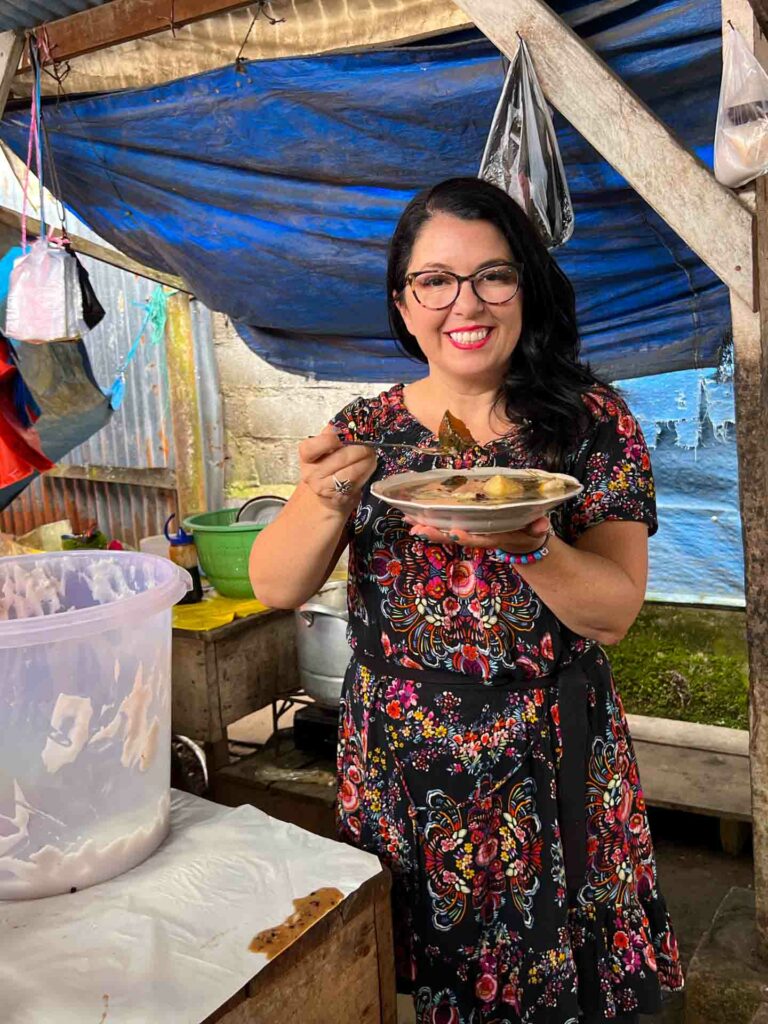

Bubur Kampiun
There are many kinds of bubur in Indonesia. It is also known as congee and reflects our large Chinese population.
Bubur kampiun is one of the most unique versions. It is a sweet porridge that mixes rice flour, mung beans and palm sugar, often topped with shredded coconut and pandan leaves.
It’s a bit sweet and represents the Minangkabau’s Indian and Middle Eastern influences through its combination of textures and flavors.
It is more common for breakfast in Indonesia and more often found in markets.
Check out Ayngelina’s bubur kampiun video.
Gulai Cubadak
Indonesian fruits are often used in savory cooking. Gulai cubadak is made with local jackfruit. It is simmered in coconut milk, turmeric, galangal, lemongrass and other spices.
It’s very aromatic with a rich curry and great for both vegetarians and meat eaters.
Heading to other islands? Check out this post on exotic Bali fruits.
Asam Padeh Ikan
Asam padeh ikan is a tangy and spicy fish stew, notable for its use of tamarind and chili.
The sourness from the tamarind balances the heat, creating a refreshing flavor profile.
This dish showcases the Minangkabau’s skill in blending sour, spicy and savory elements, and is a beloved part of their cuisine for its bold taste and comforting warmth.
Malaysians also love this dish that was brought to the country by Minang travelers. It is an especially popular Melaka food but known locally as asam pedas, which literally means sour spicy.
Gulai Lokan
Gulai Lokan is a traditional Indonesian curry dish from Padang that features lokan, a type of saltwater clam or mussel.
In Gulai lokan, shellfish are cooked in a rich, spicy and aromatic curry sauce made with coconut milk and a variety of spices such as turmeric, galangal, lemongrass, garlic, shallots and chili peppers.
The sauce is seasoned with tamarind for a touch of tanginess, balancing the creamy coconut milk and complementing the natural briny flavor of the lokan.
This dish is often enjoyed with rice or lontong, which helps to soak up the flavorful curry sauce.
Gulai Jariang (Jengkol)
Gulai jariang is a unique Indonesian curry that features jengkol (Indonesian name), also known as stinky bean.
This local Indonesian legume known for its pungent aroma and meaty texture.
Despite its strong smell, which can be off-putting to some, jengkol is highly valued food in Padang. for its nutritional properties and its ability to absorb the complex flavors of the gulai sauce.
Indonesian Vegetarian Food
Terong Balado
Terong balado is a vibrant dish featuring eggplant slathered in a spicy chili sauce known as sambal balado.
Eggplant is fried and then mixed with the sambal, resulting in a rich and fiery flavor combination.
This dish is a testament to the Minangkabau’s love for bold, spicy food and their skill in balancing heat with the mildness of eggplant.
Sambal Lado Mudo
Sambal lado mudo is a vibrant green chili sambal that’s both fresh and fiery.
Made with young, green chilies, it’s less mature and thus brings a different kind of heat compared to red chilies.
It’s a favorite condiment in Padang cuisine, often served with rice and other dishes to add a spicy kick.
Gulai Talua
Gulai talua is a comforting curry that features hard-boiled eggs.
The eggs are immersed in a spicy, turmeric-laden coconut milk sauce, absorbing the flavors of the herbs and spices.
Indonesian Street Food
Gulai Tunjang
Gulai tunjang is a flavorful curry that features cow’s knee to the feet, slow-cooked until the meat is tender and the collagen has thickened the sauce.
The spices and coconut milk meld to create a rich, hearty dish.
Teh Talua
Although there are many Indonesian drinks from Padang, the most famous is teh talua known as teh telur in Indonesian.
It’s basically egg tea.
Traditional Indonesian Drinks
Originally only Minangkabau royalty in West Sumatra could drink this tea. It didn’t become a widespread drink until the mid-1930s.
It’s a hearty drink that is known as a libido booster. Make it at home with this teh talua recipe.
Balado Kentang
Balado kentang is a spicy and savory dish consisting of fried potato chunks tossed in a hot and tangy chili sauce known as sambal balado.
The potatoes absorb the bold flavors, creating a satisfying side that’s crunchy on the outside and soft on the inside.
It’s a simple yet beloved food in Padang.
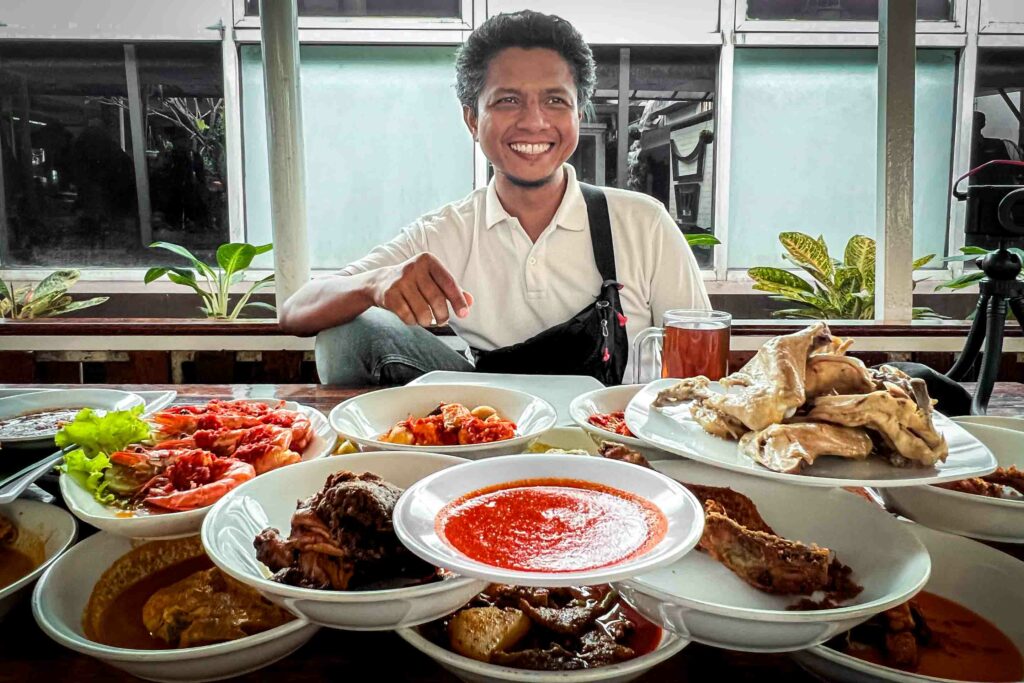
Best Padang Restaurants
If you only have a short time to visit in Padang you must go to a Masakan Padang, which is the most traditional style of food in Padang.
Masakan Padang Restaurants
These restaurants are easily recognizable by the towering stacks of plates and bowls filled with various dishes displayed in glass windows at the front.
When you sit down to eat, you’re not handed a menu. Instead, servers bring out an array of dishes to your table in a style called hidang.
It can be fun but also overwhelming as servers stack dishes on top of each other.
Common dishes include rendang and various gulai (food in curry).
There’s also an assortment of fried fish, grilled chicken and a variety of greens and salads. These dishes are all rich with coconut milk, lime leaves and lemongrass flavors.
Rice is the staple carb that accompanies every meal.
You’re not expected to eat everything; you only pay for what you touch. But once you touch a plate you are charged for all of it.
At the end of the meal the server looks to see what you’ve eaten and charges you accordingly.
If you’re on a budget vegetarian and beef dishes are usually the least expensive. Chicken and goat are a bit costlier but considered a treat.
Best Masakan Padang
Rumah Makan Lamun Ombak
The most famous, with restaurants all over the city. You can eat in a chair, or traditional lesehan style sitting down.
It is great quality and service, but also the most largest and expensive. You can check out this video of when I took Ayngelina to RM Lamun Ombak.
Pagi Sore
A smaller option and a bit less expensive. It is family owned and a local favorite. Many Indonesian Tiktokers fly in from all over because it’s well known for its food.
Come in here and you’ll be welcomed with open arms often by the owner, who speaks English.
This video features the iconic rendang and fried chicken Indonesian tiktokers love.
Other popular spots are Sederhana and Simpang Raya.
Traditional Padang Restaurants
If you have more time and want to explore the city these are my favorite places to eat in Padang:
Terang Bulan
One of the oldest restaurants in Padang, it’s a local spot that is very affordable. Try the beef lung and jengkol.
Staff are kind to foreigners and will let you come behind the glass to look at all the food.
Cash only.
Rumah Makan Terang Bulan
Jl. Blk. Olo No.53, Olo, Kec. Padang Bar., Kota Padang
Soto Simpang Karya
The best soto Padang in the city, it’s a small spot on the corner that is cash only. The soto is a couple dollars for a bowl of dried beef in a flavorful broth.
They only make soto Padang here and it’s a known, local favorite
Soto Simpang Karya
Jl. Dobi No.2A, Kp. Pd., Kec. Padang Bar., Kota Padang
Es Durian Ganti Nan Lamo
While Indonesia is home to many iced desserts, iced durian is originally from Padang.
You can order it a few ways at this shop. I think it’s best as durian ice cream with chocolate syrup, especially for someone eating durian the first time.
Es Durian Ganti Nan Lamo
Jl. Hos. Cokroaminoto No.31B, Kp. Pd., Kec. Padang Bar., Kota Padang
